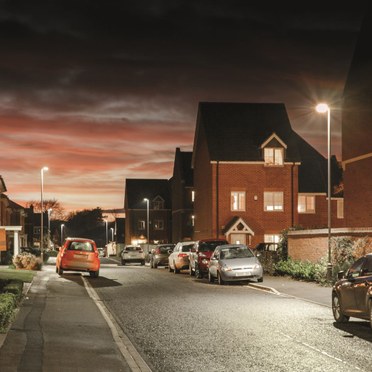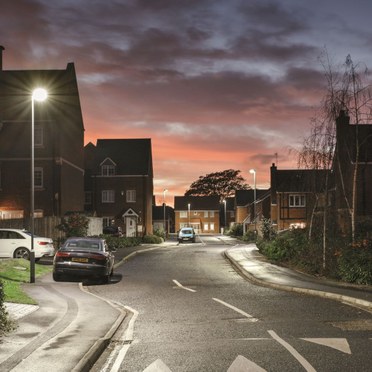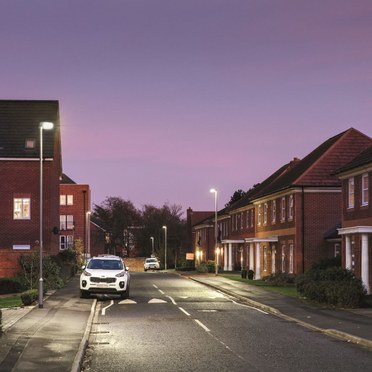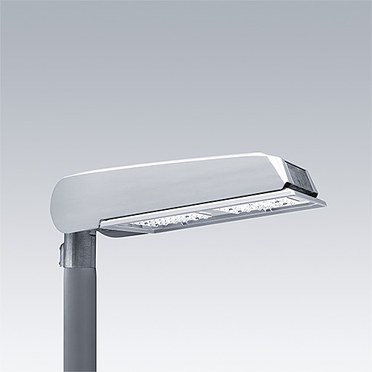Darlington, UK
Products
- Lamp efficacy
Lamp efficacy
Ensuring the lamp efficiently converts electricity into light (lm/W).
- Ballast classification
Ballast classification
Controlling the electricity supply to the lamp (Energy Efficiency Index).
- Luminaire distribution
Luminaire distribution
Controlling light emission using optics which bend and shape the light to the correct location.
- System efficacy
System efficacy
Combining optical and thermal control within the luminaire (luminaire lm/W).
- Presence/absence detection
Presence/absence detection
Presence: Lights automatically turn on/off with movement. Absence: Lights automatically turn off and must be manually switched on.
- Daylight detection
Daylight detection
Artificial lighting which responds to the natural light conditions.
- Constant illuminance
Constant illuminance
A function designed to produce correct light levels for the duration of the maintenance period.
- Task-scene setting
Task-scene setting
Allowing the user to set scenes and adapt the lighting to different tasks.
- Timed off
Timed off
Automatic cut-off can be installed to turn all lights off during unoccupied hours.
- Task lighting
Task lighting
Lighting task areas with the correct amount of light.
- Zoning of lighting
Zoning of lighting
Lighting is zoned according to area use.
- Maintenance schedule
Maintenance schedule
Maintenance must be performed in response to product age, performance and environment.
- Waste light
Waste light
Eliminating waste light which does not hit the intended target.
- Reflectance
Reflectance
Taking advantage of light which is reflected from the surface within the space.
- Visible smart metering
Visible smart metering
Results of actions can be quickly seen as increased or decreased energy use to encourage responsible energy consumption.
Darlington Borough Council chose to have a major refurbishment of residential and major roads.
The vast scale of the refurbishment project meant that the replacement had to be split into phases and started with replacing the highest energy using lanterns on major roads in the Darlington area. After a successful initial phase the project has now spread out into residential areas with the majority of the new lanterns being retrofitted onto the existing street lighting columns but some older lighting columns have been replaced as and when required.
Lighting Objectives
Thorn Lighting’s highly efficient CiviTEQ LED lanterns have been used throughout the major refurbishment. The Thorn lanterns were the preferred choice when the council wanted to replace old existing SON lamp technology and move to a more efficient LED type luminaire to significantly reduce DBC’s overall energy usage and CO2 emissions.
Solution
The CiviTEQ LED lantern can incorporate between 12-72 LEDS to suit the application and has 12 precise lighting distributions to allow for a variety of installation possibilities. The lanterns incorporate an R-PEC® optic to provide ‘wide street’ illumination to allow for efficiency and safety. The fitting is well-proportioned, compact and lightweight for easy handling and installation with low windage. CiviTEQ is available in two sizes, small and large and comes with a comprehensive range of controls incorporating a Bi-Power Switch to activate or de-activate dimming on-site.
Martin Clarkson, Street Lighting Engineer for Darlington Borough Council commented “The Thorn CiviTEQ LED lantern was chosen due to its efficiency, photometric performance, low maintenance requirements and ease of installation. It offers a wide range of lumen outputs and light distribution options. The lanterns are ordered with pre-set adaptive lighting controls to provide more measured illumination during specific times and greater energy savings”.
To download as a PDF, click here.




